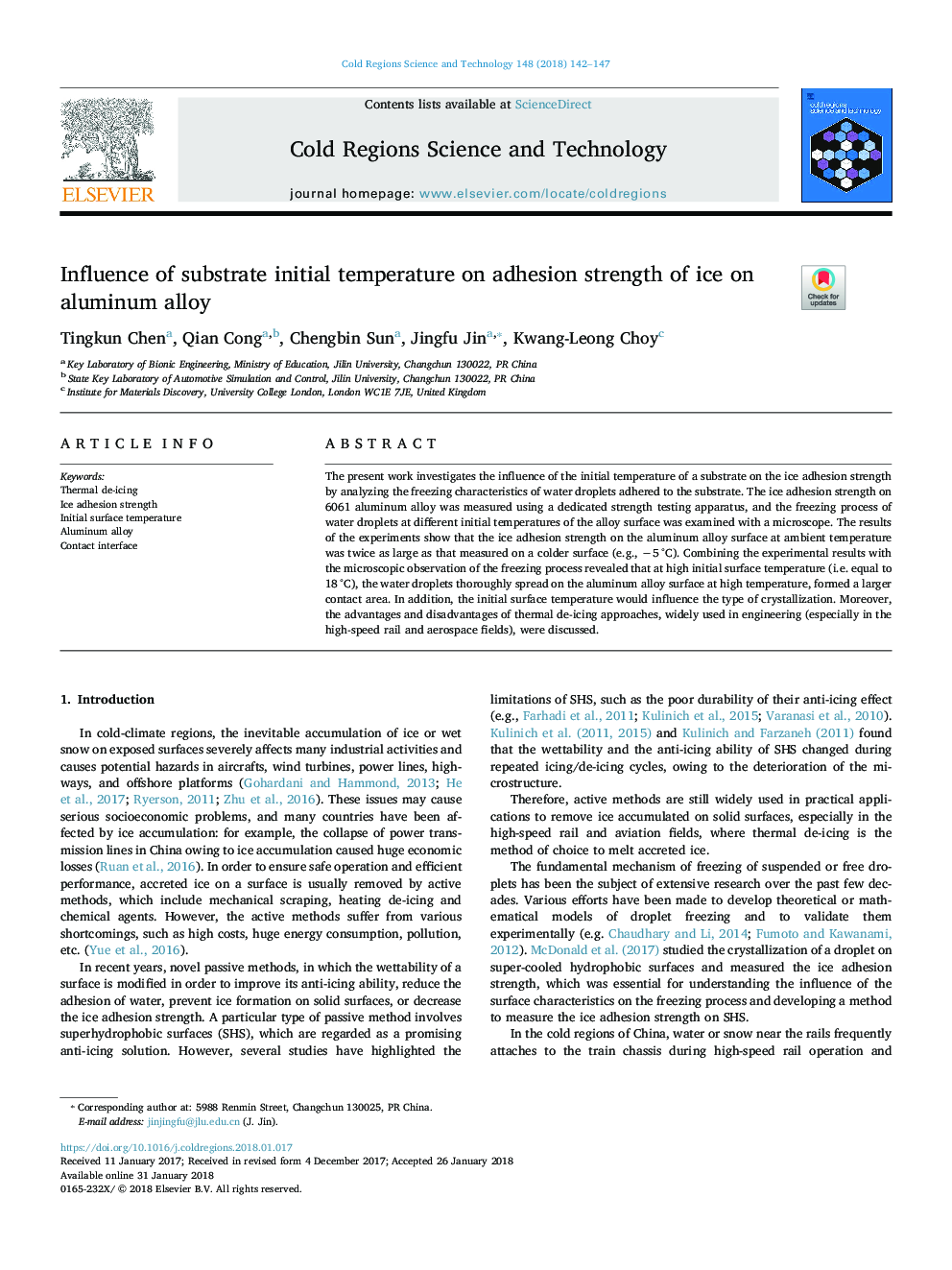| Article ID | Journal | Published Year | Pages | File Type |
|---|---|---|---|---|
| 8906550 | Cold Regions Science and Technology | 2018 | 6 Pages |
Abstract
The present work investigates the influence of the initial temperature of a substrate on the ice adhesion strength by analyzing the freezing characteristics of water droplets adhered to the substrate. The ice adhesion strength on 6061 aluminum alloy was measured using a dedicated strength testing apparatus, and the freezing process of water droplets at different initial temperatures of the alloy surface was examined with a microscope. The results of the experiments show that the ice adhesion strength on the aluminum alloy surface at ambient temperature was twice as large as that measured on a colder surface (e.g., â5â¯Â°C). Combining the experimental results with the microscopic observation of the freezing process revealed that at high initial surface temperature (i.e. equal to 18â¯Â°C), the water droplets thoroughly spread on the aluminum alloy surface at high temperature, formed a larger contact area. In addition, the initial surface temperature would influence the type of crystallization. Moreover, the advantages and disadvantages of thermal de-icing approaches, widely used in engineering (especially in the high-speed rail and aerospace fields), were discussed.
Related Topics
Physical Sciences and Engineering
Earth and Planetary Sciences
Earth and Planetary Sciences (General)
Authors
Tingkun Chen, Qian Cong, Chengbin Sun, Jingfu Jin, Kwang-Leong Choy,
